May 6, 2024

Ahhh! The sweet, sweet smell of freedom! Or is that cannabis? In Amsterdam they may be one and the same. Long considered one of, if not the most liberal city in the world, it has been said that perhaps the only thing the Dutch won’t tolerate is intolerance.
As we familiarized ourselves with the city through a Hop On Hop Off bus/canal ride and a tour of the Jewish Quarter, it was hard not to notice that the “warm smell of calitas, rising up through the air” was much more prevalent than that of tobacco. Marijuana has been legal in the Netherlands since 1976, and is readily available for purchase at the local coffee houses. In fact, if you’re looking for a cuppa joe don’t go to the coffee house – that’s where you go to restock your weed. You go to the coffee bar for coffee.
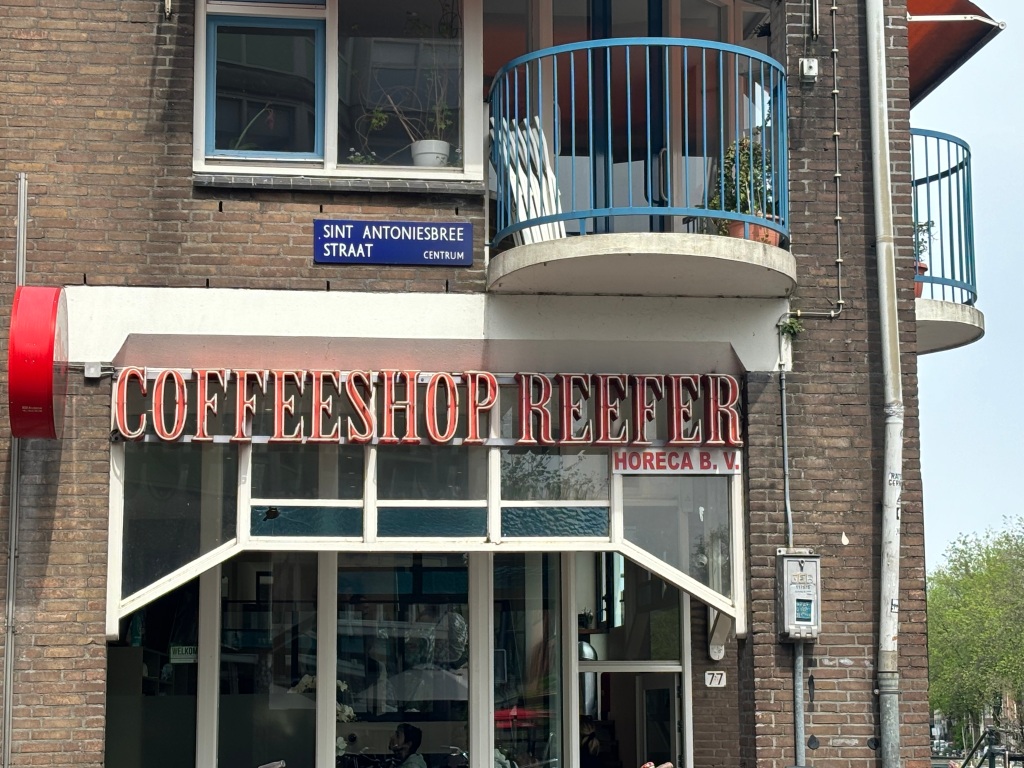
Throughout its history Amsterdam’s reputation for tolerance has made it an ideal destination for those seeking greater freedom. They’ve come in pursuit of independence from government control, higher wages, religious expression, and to escape the Nazis.
The Jewish Quarter of Amsterdam pays homage to those who sought refuge from the Nazis during the 1930s and 40s, as Hitler’s view of an Arian nation began to play out in Germany. Perhaps the most famous of these was Anne Frank, whose family evaded capture by the Nazis for nearly two years by living in the attic of a home behind her father’s place of business. We weren’t able to view the inside of the home (you have to buy your tickets six weeks in advance – something we didn’t know), but we did walk past as part our tour of the Jewish Quarter.

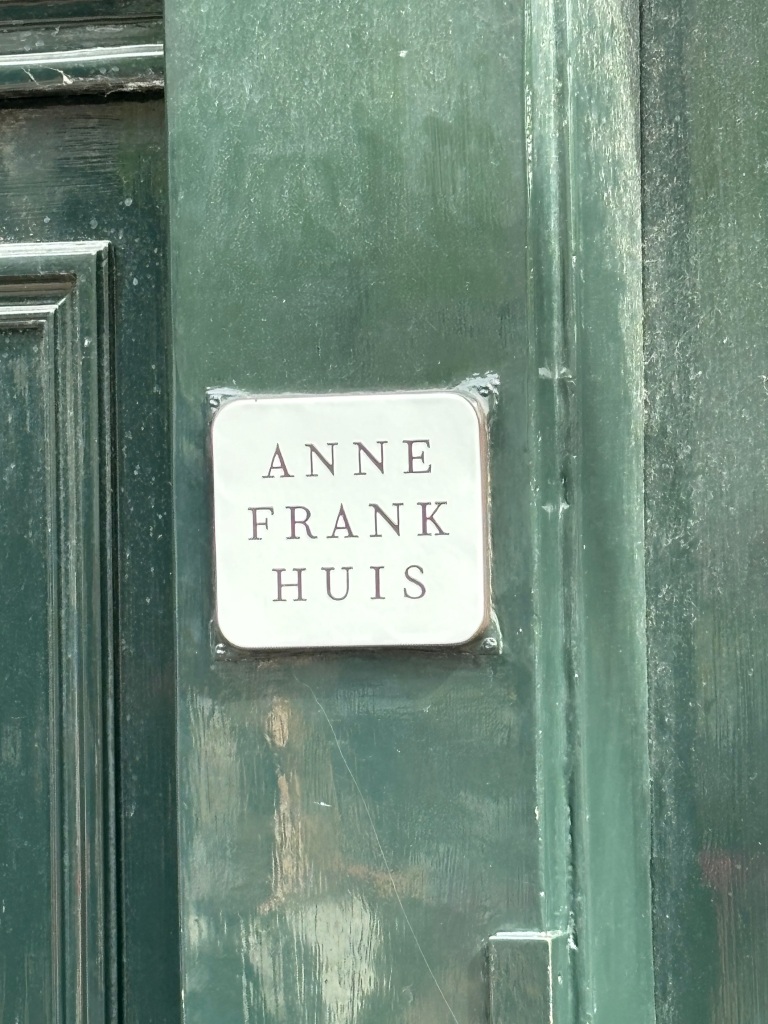
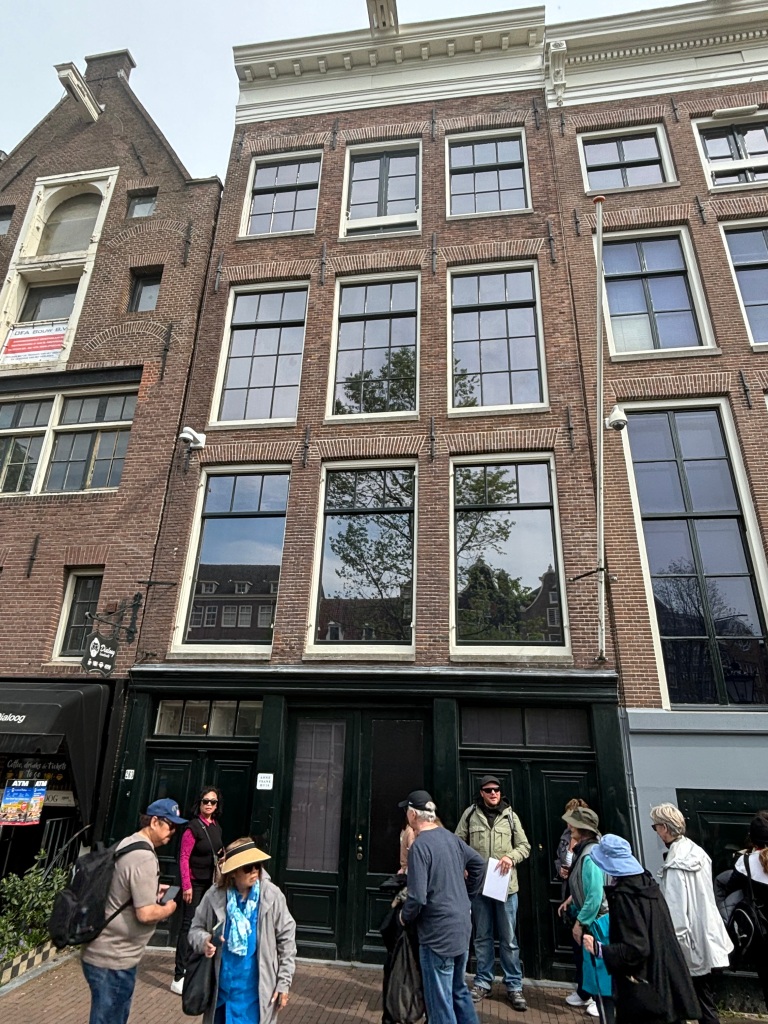
The Nazis occupied Holland from 1940-1945. Of the 140,000 Jews who lived here during that time, more than 102,000 did not survive. A Holocaust memorial honoring these individuals was dedicated in 2021. It was designed by the same architect who did the 911 memorial and shows the same incredibly sensitive and thoughtful attention to detail. The memorial is built in geometric shapes that emulate the Hebrew spelling of the words “In memory of.” The mirror at the top of the memorial signifies a reflection of the past as well as a vision of the future. Each one of the 102,000 bricks in the memorial contains the name of an individual who died in the concentration camps, and their age at the time of death. Their ages range from one day to 87 years.

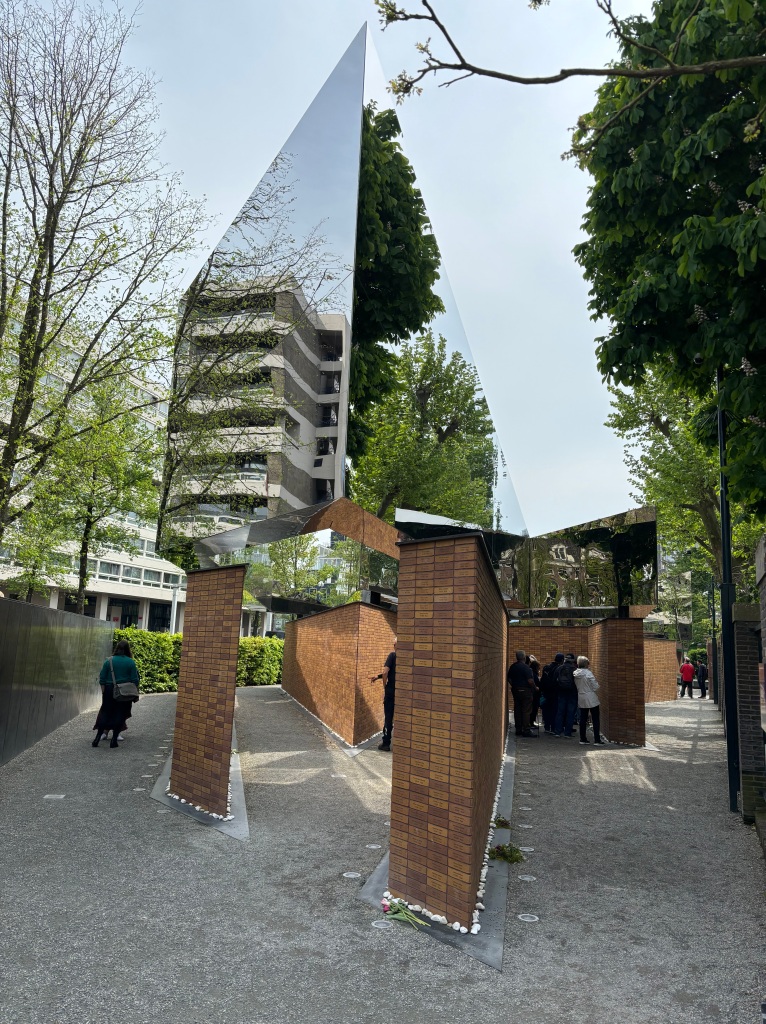

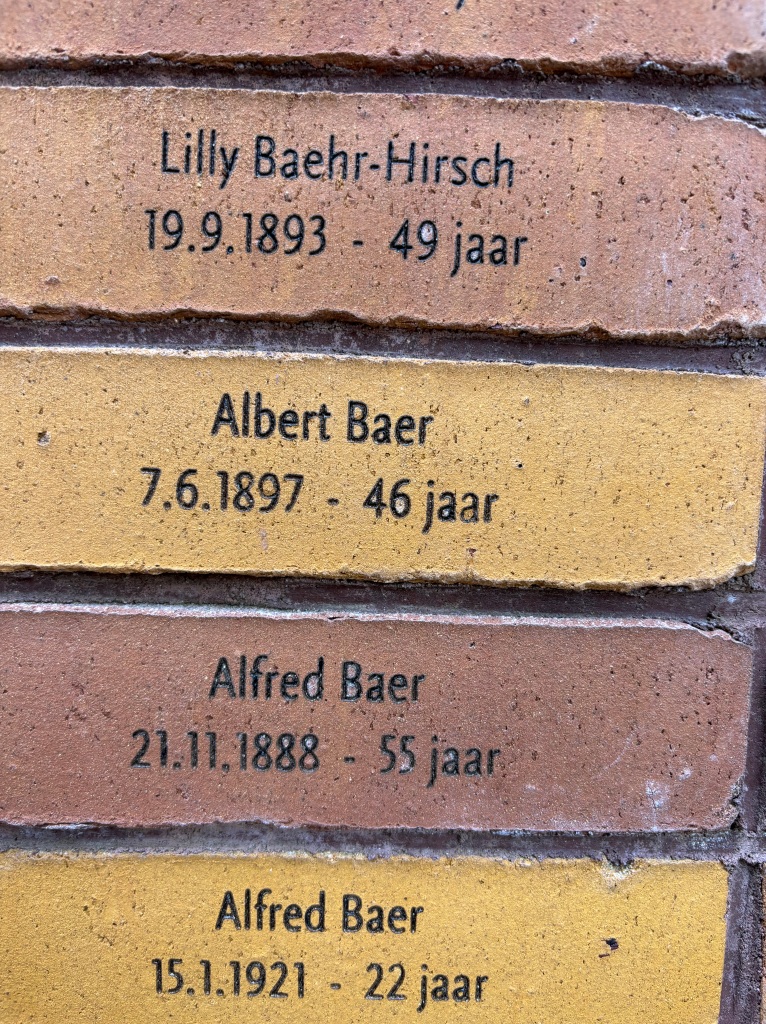
Another artist honors these individuals by placing gold bricks among the bricks that pave the sidewalks in front of where their homes were located before they were forced out. On each brick is written the family name, the names of the individual family members and the concentration camp where they were taken.

A bronze statue stands in front of what was once a school for the deaf, honoring the nearly 16,000 deaf individuals killed by the Nazis. Its inscription reads, “The world stayed deaf.”

Yet another memorial honors members of the gay community persecuted by the Nazis. Just as the yellow Star of David was used to identify those of Jewish descent, a pink triangle was used to identify those who were gay. The memorial contains a pink triangle and is made of pink granite.
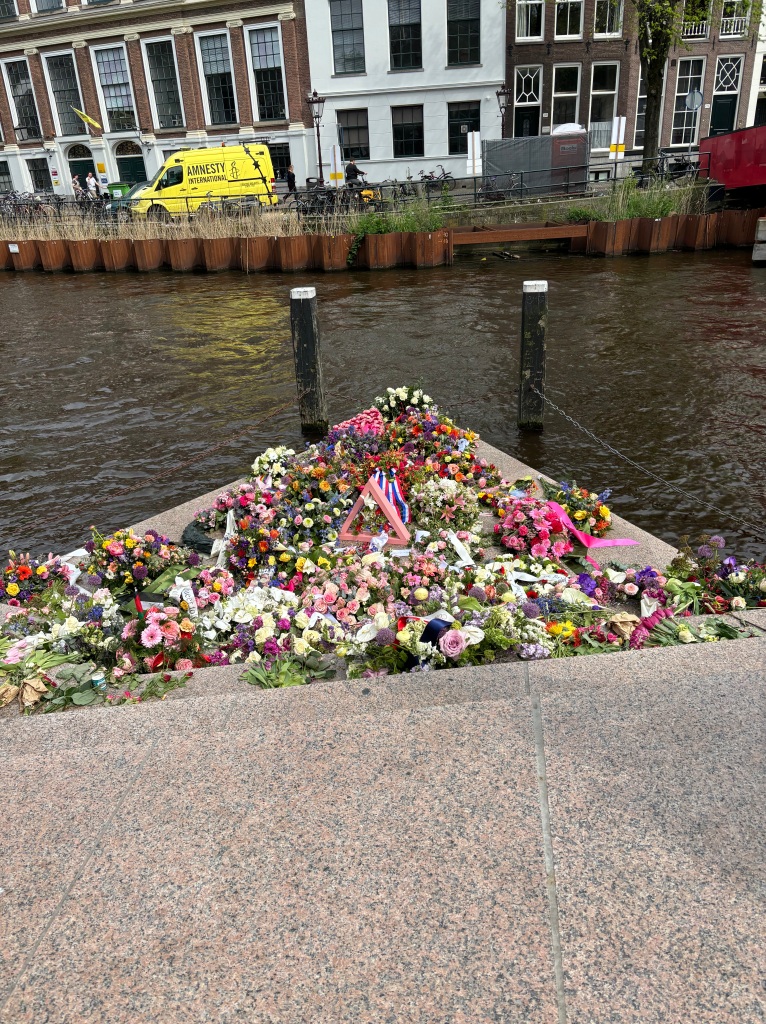
A National Monument to commemorate all who died in WWII, military and civilian, stands in Amsterdam’s Dam Square (where an actual dam used to be). Each May 4th the King emerges from the Royal Palace across the street and begins a wreath-laying ceremony. Afterwards he leads the entire country in two minutes of silence. On May 5th, the actual date the Nazis surrendered, there is a huge celebration with lots of music and merrymaking.
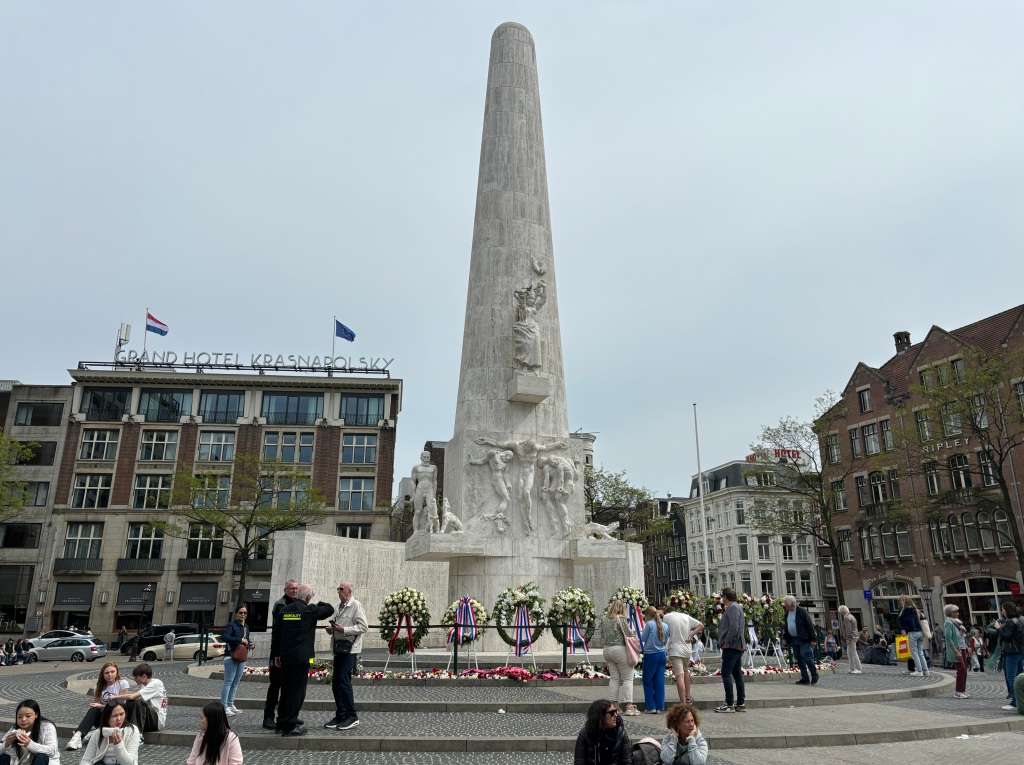
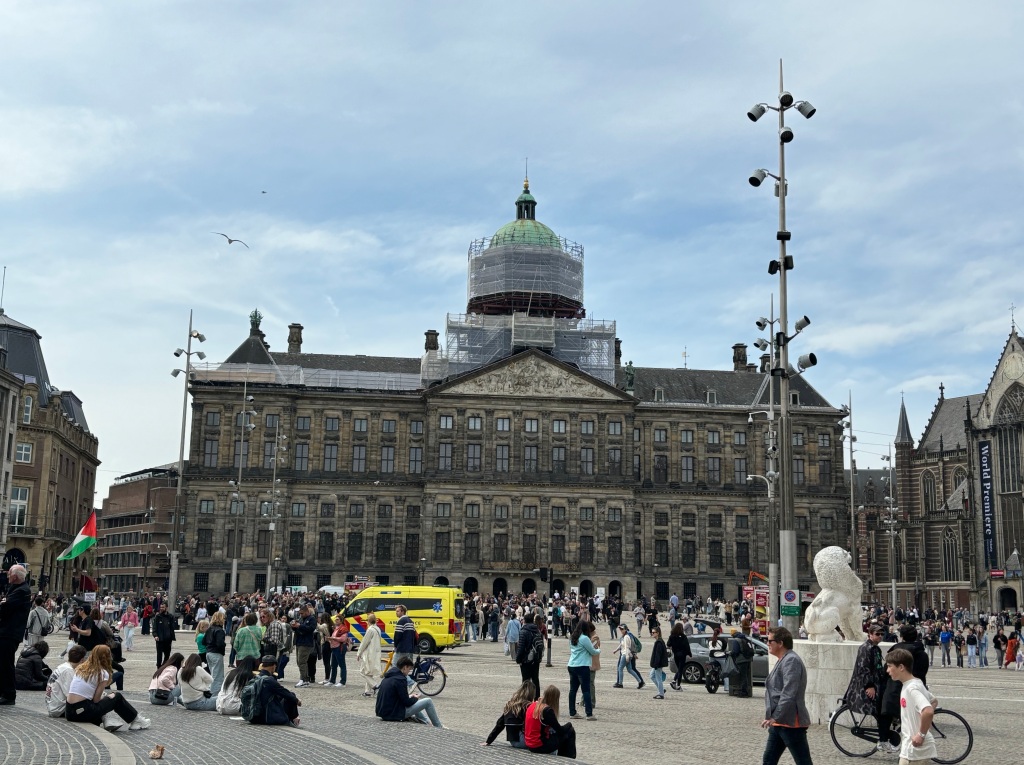
This 700+ year-old city is like a giant outdoor museum. Famous for its network of canals that divide the land into some 90 “islands,” Amsterdam has approximately 1,300 bridges and viaducts, and bicycles are a major form of transportation. As a pedestrian the bicycles are a much bigger obstacle than cars!
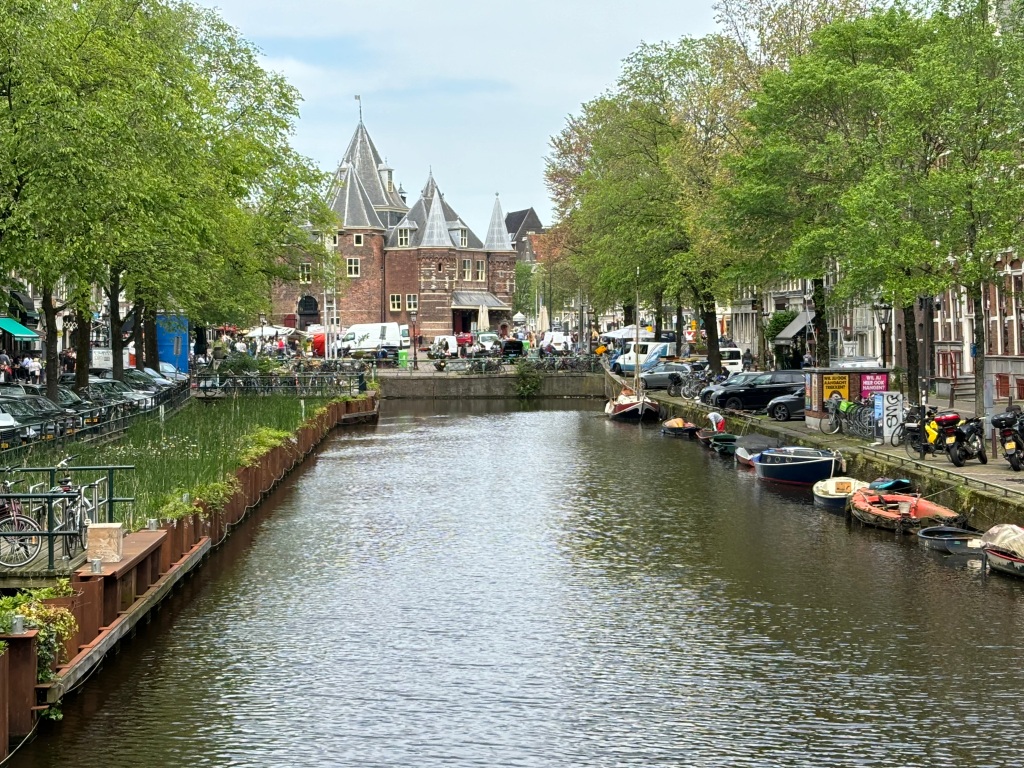

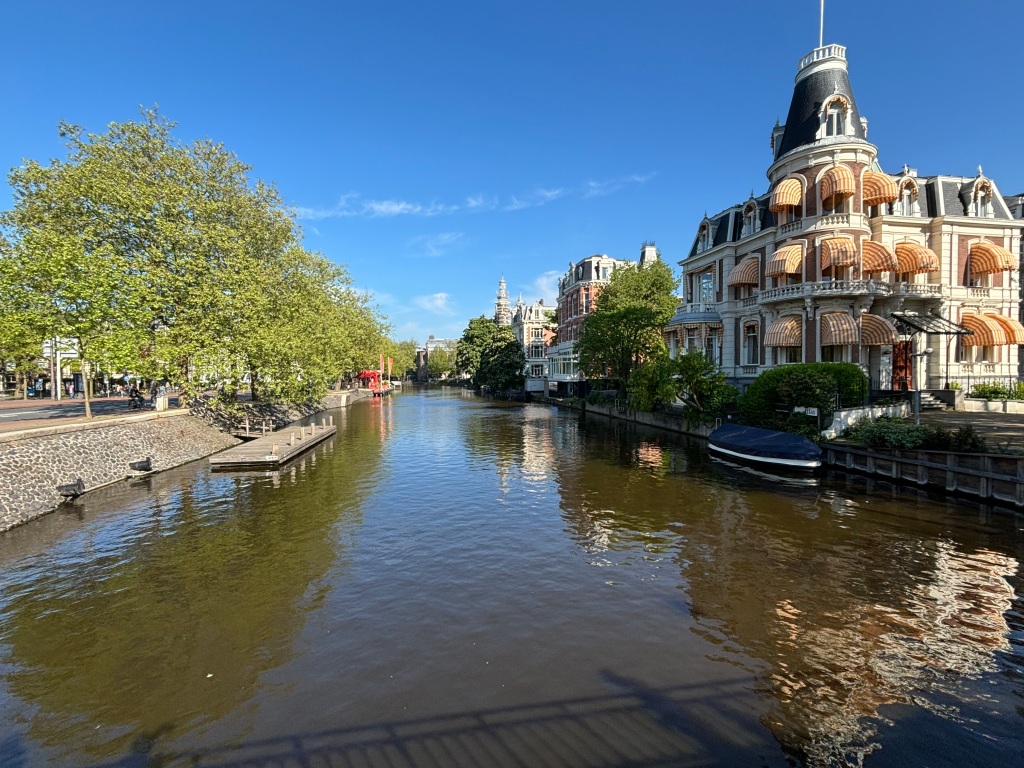
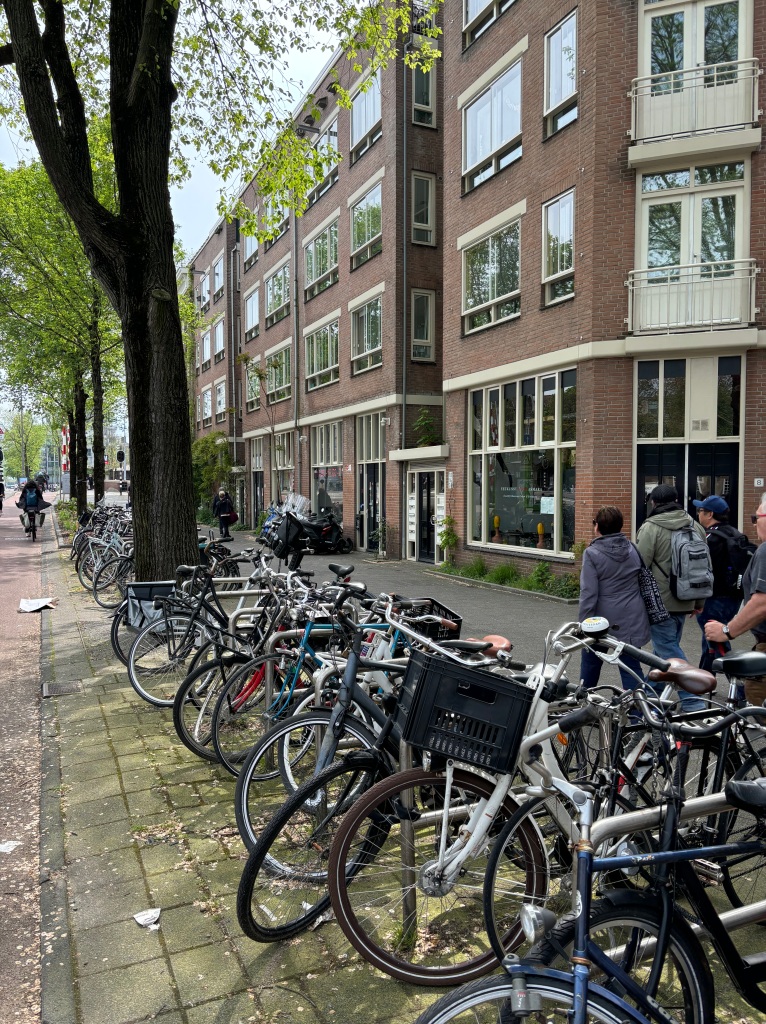
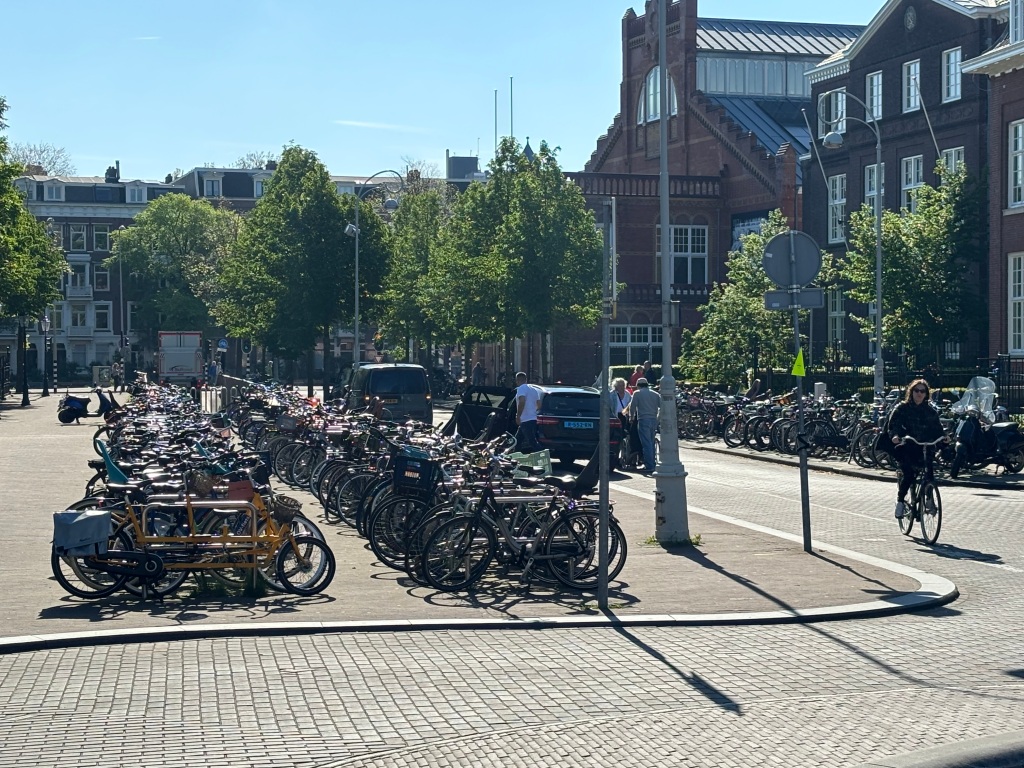

It has also been home to such famous artists as Rembrandt and van Gogh. Below is a picture of Rembrandt’s home. It is the entire building with the red shutters. Rembrandt essentially put 30% down to buy the house, but the remaining mortgage and financial hardship would cause him to file bankruptcy and lose the house nearly 20 years later. It is said that he died penniless.
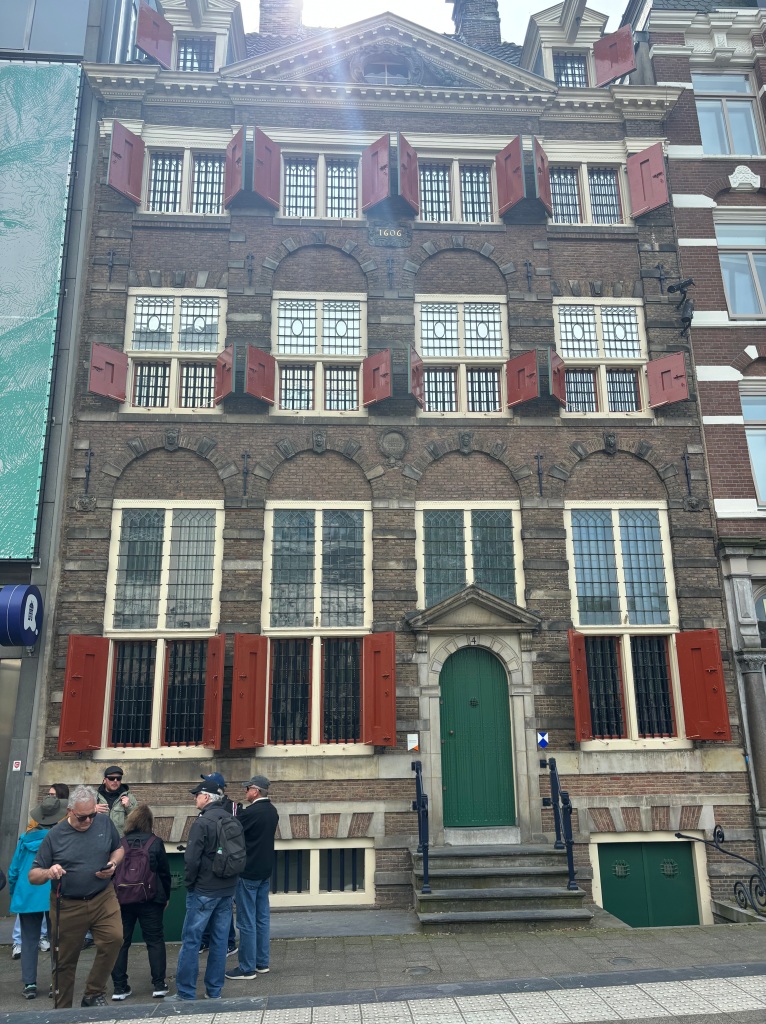
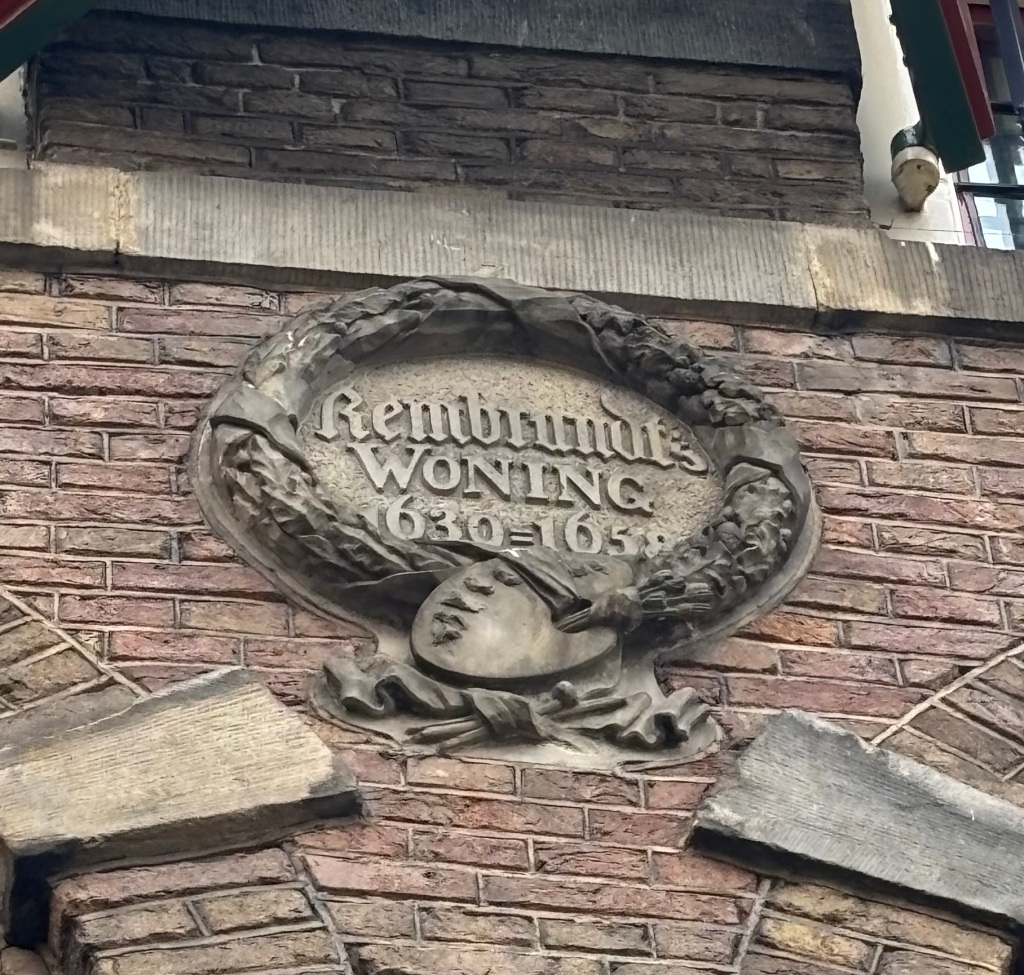
One of the things you notice immediately upon arriving in Amsterdam is how narrow the homes and businesses are. This is because during the era in which they were built homes were taxed based on their width. To save money, owners built up instead of out. These narrow houses had/have steep, narrow staircases, making it very difficult to carry furniture or other bulky items up them. Outdoor pulley systems were designed for getting furniture and other large items into the house. These same pulley systems are still in play 500+ years later.

A heavy rope is attached to the hook at the end of the iron bar, a pulley is created, and the rope is tied around the piano or washing machine or sofa or whatever it is being moved. Using the pulley, the item is manually hoisted to the appropriate floor and brought in through the window. We saw one in use while we were on the bus tour but moved too quickly to get a picture of it.
Another holdover from days gone by is the men’s urinal. Men will be men, and when they have to go to the bathroom what better place than into the canal? This creates a bit of a health hazard, especially if one has been drinking, so in the 1800s the city decided to do something about it. They built these iron urinals all over the city. They’re very tastefully designed, allowing a great deal of privacy (you only see the legs of the person using them) and cute little figurines on the corners. They’re still there today and still getting plenty of use. In fact, if men don’t use them and choose to just let it all hang out over the edge of the canal – an event known as “wild peeing”- it’s a 90 Euro fine (nearly $100)! Even so, according to one article I read nearly 400 “people” (c’mon, we all know you mean “men” – women wouldn’t be caught dead doing this!) a year need to be fished out of the canal after falling in while wild peeing.
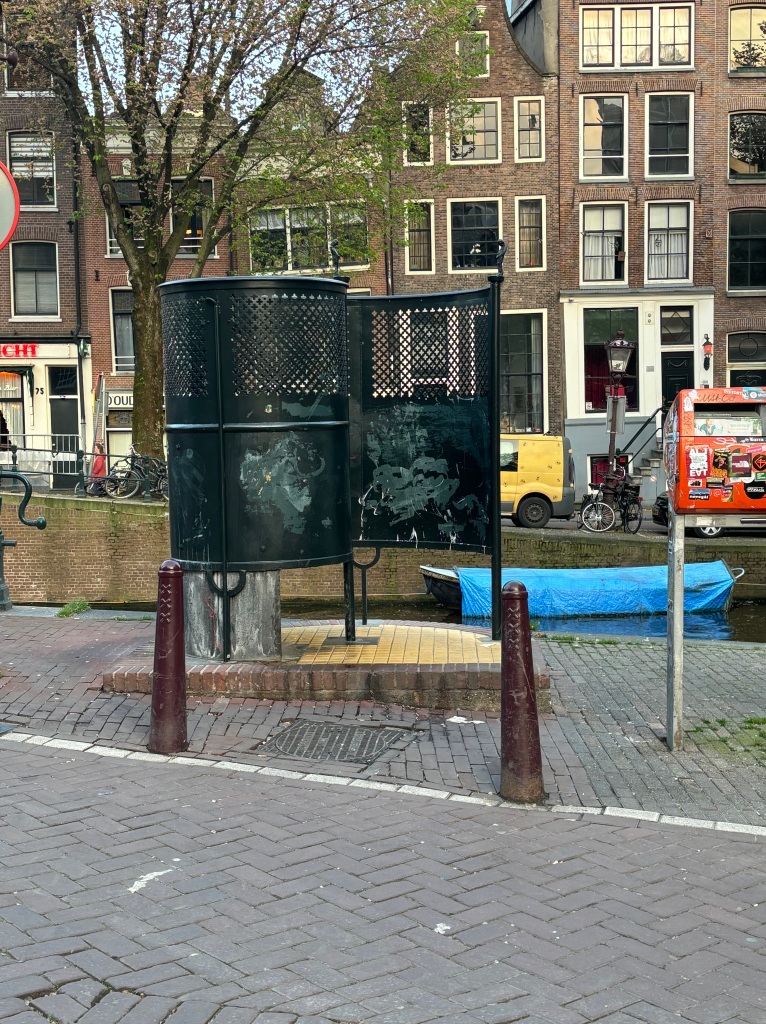
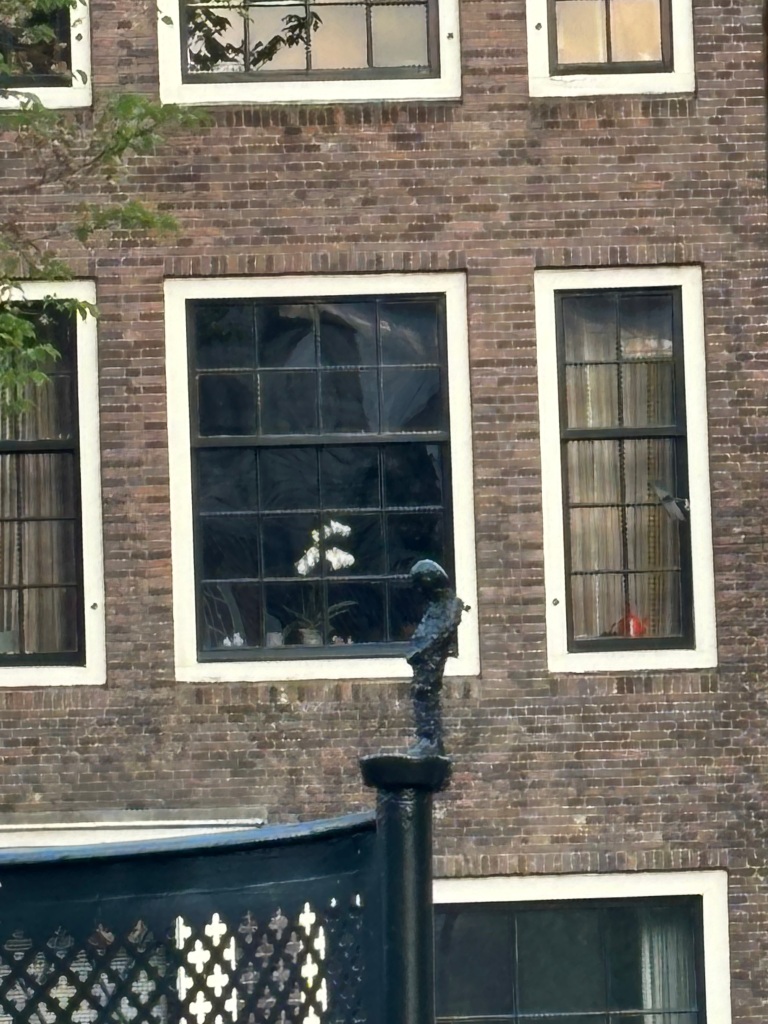
We ended with dinner at a local restaurant overlooking one of the canals at Central Station. The restaurant is the white building with the red roof. Central Station is the huge building in the back. Central Station is a major international railway hub, used by more than 250,000 passengers a day, making it the second busiest railway station in the country. It was built in 1889 and has been in continuous use since. It contains 21 retail stores and 24 options for eating and drinking. You can also catch a bus or a water ferry from the station.

It was a full and educational first day in Amsterdam. We arrived at 7:45 a.m. local time (1:45 EST), dropped our bags at the hotel and hit the ground running. We didn’t return until after dinner. Our goal was to stay up until 9:00 p.m., but shortly after 8:00 Ken’s snoring filled the room! 😂

I can’t blame Ken for snoring!! Haha. Busy first day, but how great of a trip this is going to be for you guys!! Enjoy!!
LikeLike
Tell Ken if he is $100 short when he gets home we will know he was wild peeing. 😂
Sent from my iPhone
LikeLike
🤣🤣🤣🤣🤣
LikeLike
Omg…Awesome commentary & love the pics … have a blast and can’t wait to hear about your adventures and connect when you are back home
We love you both ❤️😉💕🙌👍🙏
LikeLike
Two of my fav peeps🫂🥰.
LikeLike
Aww, shucks, Harvey. Hope you and the kiddos are doing well. Sure would like to have you visit us in FL sometime! 💕💕💕
LikeLike